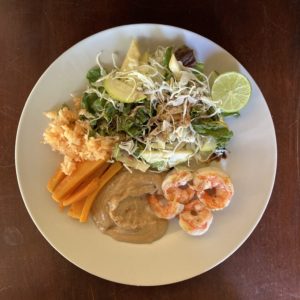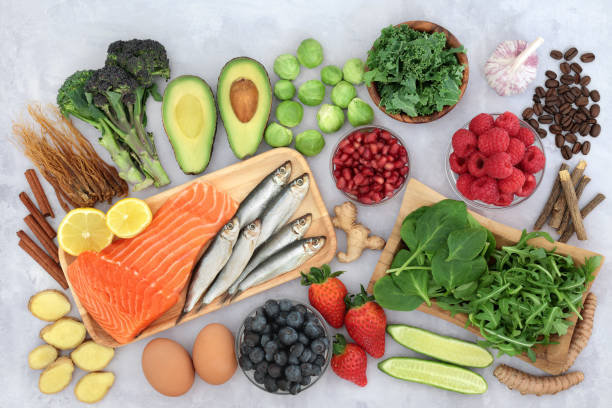
When we hear the word “Inflammation” we immediately associate it with something bad in our bodies. You might be interested to know that Inflammation is a protective mechanism that allows your body to defend itself against infection, illness, or injury.
What makes inflammation “bad”, as anything in life, is when it’s excessive and lasts for too long…just like eating too much chocolate…
If you have too much inflammation for too long it can turn into a chronic condition, which can lead to various diseases.
When we get sick, one of the symptoms of any illness is an inflammatory response. Your body increases its production of white blood cells, immune cells, and substances called cytokines that help fight infection. Classic signs of acute (short-term) inflammation include redness, pain, heat, and swelling. On the other hand, chronic (long-term) inflammation often occurs inside your body without any noticeable symptoms. This type of inflammation can drive illnesses like diabetes, heart disease, fatty liver disease, and cancer.
Inflammation can transform into a chronic condition if we don’t control important factors in our lifestyles, such as our diet. As we know food is the fuel of living things and that’s why our body holds us accountable for what we ingest everyday. But just looking around it’s obvious that creating healthy eating habits is hard. We are exposed to highly addictive, processed foods and high amounts of sugar from a young age, and by the time we become adults, we barely start understanding the consequences of eating those types of foods. Is it any wonder that roughly 50% of the adult population in developed countries like the UK and US are obese?
At a basic level the role of your diet is to provide a healthy balance of protein, carbs, and fat at each meal. In addition your diet should also meet your body’s needs for vitamins, minerals, fiber, and water. Ideally we would accomplish this while eating fewer inflammatory foods and more anti-inflammatory foods.
New research published in the Journal of Internal Medicine suggests that a diet that includes foods like fruits and vegetables, and mostly steers clear of processed foods, is associated with a lower risk of death at an early age.
The study followed 68,273 Swedish men and women between the ages of 45 and 83 for 16 years, and those who stuck with a mostly anti-inflammatory diet had an 18% lower risk of all-cause mortality, 13% lower risk of dying from cancer, and 20% lower risk of dying from heart disease. However, an anti-inflammatory diet isn’t just about what you eat, but what you don’t eat.
6 Foods That Cause Inflammation
1.Sugar and high-fructose corn syrup
One of the reasons that added sugars are harmful is that they can increase inflammation, which can lead to disease. Sugar can also be harmful because it supplies excess amounts of fructose. While the small amounts of fructose in fruits and vegetables are fine, eating a lot of fructose causes inflammation within the endothelial cells that line your blood vessels, which is a risk factor for heart disease.
Foods high in added sugar include candy, chocolate, sugar-sweetened drinks, cakes, cookies, ice cream, doughnuts, sweet pastries, and certain cereals.
2.Artificial trans fats
Artificial trans fats are likely the unhealthiest fats you can eat. They’re created by adding hydrogen to unsaturated fats, which are liquid, to give them the stability of a more solid fat.
On ingredient labels, trans fats are often listed as partially hydrogenated oils. Most margarines contain trans fats, and they are often added to processed foods to extend shelf life.
Unlike the naturally occurring trans fats found in dairy and meat, artificial trans fats have been shown to cause inflammation and increase disease risk. In addition to lowering HDL (good) cholesterol, trans fats may impair the function of the endothelial cells lining your arteries, which is a risk factor for heart disease.
Foods high in trans fats include French fries and other fried fast food, some varieties of microwave popcorn, certain margarines and vegetable shortenings, packaged cakes and cookies, some pastries, and all processed foods that list partially hydrogenated vegetable oil on the label.
3.Vegetable and seed oils
During the 20th century, the consumption of vegetable oils increased by 130% in the United States. Some scientists believe that certain vegetable oils, such as soybean oil, promote inflammation due to their very high omega-6 fatty acid content. They are used as cooking oils and are a major ingredient in many processed foods.
Although some dietary omega-6 fats are necessary, the typical Western diet provides far more than people need. In fact, health professionals recommend eating more omega-3-rich foods, such as fatty fish, to improve your omega-6 to omega-3 ratio and reap the anti-inflammatory benefits of omega-3s.
4.Refined carbohydrates have had most of their fiber removed. Fiber promotes fullness, improves blood sugar control, and feeds the beneficial bacteria in your gut. Researchers suggest that the refined carbs in the modern diet may encourage the growth of inflammatory gut bacteria that can increase your risk of obesity and inflammatory bowel disease.
Refined carbohydrates are found in candy, bread, pasta, pastries, some cereals, cookies,crackers, chips, pretzels, cakes, sugary soft drinks, and all processed foods that contain added sugar or flour.
5.Excessive alcohol: Moderate alcohol consumption has been shown to provide some health benefits. However, higher amounts can lead to severe problems.
People who drink heavily may develop problems with bacterial toxins moving out of the colon and into the body. This condition — often called “leaky gut” — can drive widespread inflammation that leads to organ damage. To avoid alcohol-related health problems, intake should be limited to two standard drinks per day for men and one for women.
6.Processed meat contains more advanced glycation end products (AGEs) than most other meats. AGEs are formed by cooking meats and some other foods at high temperatures. They are known to cause inflammation.
Consuming processed meat is associated with an increased risk of heart disease, diabetes, and stomach and colon cancer. Common types of processed meat include sausage, bacon, ham, smoked meat, hot dogs, bologna and beef jerky.
Anti-Inflammatory Foods You Can Eat

Once we realize that most of the food we eat every day cause inflammation, we might be disappointing to see that an apple can cost more than a box of cookies, and that olive oil, nuts, and fish can take up a significant part of a grocery budget. However, the long-term benefits of switching to an anti-inflammatory diet far outweigh the immediate costs.
There are strategies you can use to eat well without emptying your bank account, including buying frozen fruits and vegetables, which are just as high in nutrients as fresh versions, focusing on plant-based proteins like beans, lentils, and soy protein, buying foods in bulk, and keeping an eye on how much you’re getting takeout or eating at restaurants.
Extreme dietary shifts can be intimidating for many people. I suggest easing into these changes as the best approach for long-term success. Setting small goals to gradually adjust the way you eat can ease the transition and establish healthy habits that stick to your body and budget. For example, start with small changes such as having a salad three or four days a week instead of eating out for your lunch breaks, or commit to having fish for dinner twice a week.
Investing in your own health is a big thing, while there may be some up-front costs of switching to this type of diet, which really everyone would benefit from, the amount it would save in healthcare costs and productivity is really worth it, making the rewards way greater by lowering your risk of disease and improving your quality of life!

Over the last 10 years Ed has been building a YouTube library to help people manage their own pain or movement limitations and increase performance through exercise. He regularly adds videos so be sure to subscribe and visit regularly


"Oh My Gosh- I am ALREADY feeling relief after a few days! I used to wake up 2-3 times a night with shooting pain that anti inflammatories couldn't touch. Now I have been waking up just because I want to notice what it feels like to lay in bed pain free- THANK YOU!."

"When I first started with your program I was experience a lot of pain. Walking was difficult. I had to stop and catch my breath every few minutes and lean against a wall for support. Now when I walk with my husband we go for over an hour. I never had to sit down and stop...and, hardly any pain!!! 😊😊 I can’t thank you enough."
Frustrated that you aren't recovering fast enough?
Discover how to heal from illness and injury using movement, food and lifestyle.
Leave a Reply